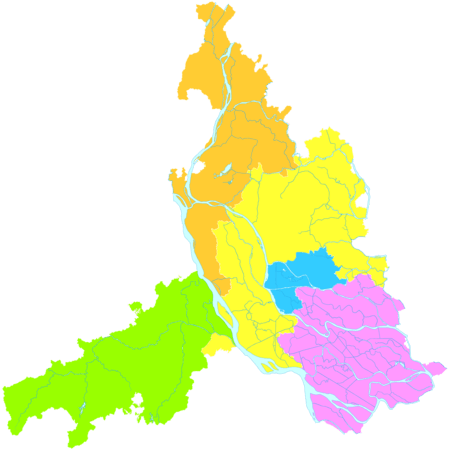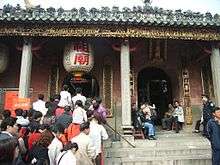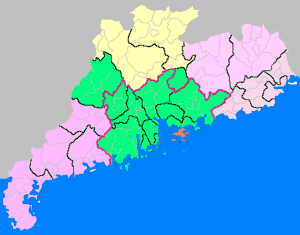Foshan
Foshan, alternately romanized as Fatshan, is a prefecture-level city in central Guangdong Province, China. The entire prefecture covers 3,848 km2 (1,486 sq mi) and has an urban population around 7.2 million in 2012. The city is part of the western side of the Pearl River Delta Economic Zone.
Foshan 佛山市 Fatshan | |
|---|---|
 Clockwise from top right: Zumiao of Foshan, Qingyun Tower in Shunfengshan Park, Foshan New Town in Shunde, Guanyin atop Mount Xiqiao, & Downtown Foshan in Chancheng | |
| Nickname(s): 禅 (Chan) | |

| |
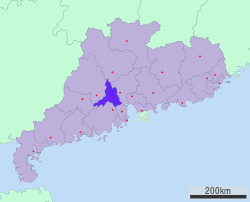 Location of Foshan in Guangdong | |
| Coordinates (Foshan municipal government): 23°01′17″N 113°07′18″E | |
| Country | People's Republic of China |
| Province | Guangdong |
| Municipal seat | Chancheng District |
| Government | |
| • CPC Committee Secretary | Lu Yi (鲁毅) |
| • Mayor | Zhu Wei (朱伟) |
| Area | |
| • Prefecture-level city | 3,848 km2 (1,486 sq mi) |
| • Water | 690 km2 (270 sq mi) |
| • Urban | 3,848 km2 (1,486 sq mi) |
| • Metro | 17,573 km2 (6,785 sq mi) |
| Elevation | 16 m (52 ft) |
| Population (2012) | |
| • Prefecture-level city | 7,197,394 |
| • Density | 1,900/km2 (4,800/sq mi) |
| [1] | |
| Time zone | UTC+8 (China Standard Time) |
| Postal code | 528000 |
| Area code(s) | (0)757 |
| ISO 3166 code | CN-GD-06 |
| Licence plate prefixes |
|
| GDP[2] | ¥ 940 billion US$139 billion |
| GDP per capita | ¥ 124,324 US$18,413 |
| Website | foshan |
| Foshan | |||||||||||||||||||||||||||||
|---|---|---|---|---|---|---|---|---|---|---|---|---|---|---|---|---|---|---|---|---|---|---|---|---|---|---|---|---|---|
.svg.png) "Foshan" in Chinese characters | |||||||||||||||||||||||||||||
| Chinese | 佛山 | ||||||||||||||||||||||||||||
| Hanyu Pinyin | Fóshān | ||||||||||||||||||||||||||||
| Cantonese Yale | Fahtsàan or Fahtsāan | ||||||||||||||||||||||||||||
| Postal | Fatshan | ||||||||||||||||||||||||||||
| Literal meaning | "Buddha Mountain" | ||||||||||||||||||||||||||||
| |||||||||||||||||||||||||||||
Foshan is regarded as the home of Cantonese opera, a genre of Chinese opera; Nanquan, a martial art; and lion dancing.
Name
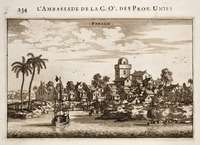
Fóshān is the pinyin romanization of the city's Chinese name 佛山, based on its Mandarin pronunciation. The Postal Map spelling "Fatshan" derives from the same name's local Cantonese pronunciation. Other romanizations include Fat-shan[3] and Fat-shun.[4] Foshan means "Buddha Mountain" and, despite the more famous present-day statue of Guanyin (or Kwanyin) on Mount Xiqiao, who isn't a Buddha, it refers to a smaller hill near the centre of town where three bronze sculptures of Buddha were discovered in AD 628. The town grew up around a monastery founded nearby that was destroyed in 1391.[5]
History
Pre-20th Century
Foshan remained a minor settlement on the Fen River for most of China's history. It developed around a Tang-era Buddhist monastery that was destroyed in 1391.[5] The Foshan Ancestral Temple, a Taoist temple to the Northern God (Beidi) that was rebuilt in 1372, became the new focus of the community by the 15th century.[5]
By the early Ming, Foshan had grown into one of the four great markets in China, primarily on the strength of its local ceramics but also on account of its metalwork.[6] Under the Qing, its harbor on the Fen River was limited to ships of a thousand tons' burden but it remained well connected with Guangdong's other ports.[6] By the 19th century, Foshan was considered the "Birmingham of China", with its steel industry responsible for the consumption of the majority of the province's iron production.[4]
20th century and onwards
Foshan was connected to Guangzhou and Sanshui by rail in the early 20th century.[6] The Ancestral Temple was converted into the Foshan Municipal Museum upon the victory of the Communists in the Chinese Civil War in 1949.
Foshan remained primarily focused on ceramic and steel production until the 1950s, when it became an urbanizing political center. On 26 June 1951, it left Nanhai County to become a separate county-level city and, in 1954, it was made the seat of the prefectural government.[6] Its economy stagnated as a result of the Cultural Revolution—traditional ceramic ware was forbidden and its workshops were turned to producing Maoist and Revolutionary folderol — but it continued to grow, reaching 300,000 people by the 1970s, making it the province's second city after Guangzhou.[6]
As early as 1973, however, its agriculture and consumer industries were permitted to become an export production base and a modern highway linked it to Guangzhou soon after. This permitted its party secretary Tong Mengqing and mayor Yu Fei to take full advantage when Deng Xiaoping introduced his Opening Up policies after the fall of the Gang of Four.[6]
In 1983, Foshan was promoted to a prefecture-level city with its former core becoming the new Chancheng District but lost the southwestern half of its former territory to Jiangmen.[6] On 8 December 2002, Shunde and Nanhai joined its urban core as a full district. Shunde has gone on to obtain an unusual autonomous status in 2009, placing its oversight in the hands of the provincial government rather than the prefectural one.
Geography
Foshan lies on the Fen River in the estuaries making up the west side of the Pearl River Delta. Guangzhou lies 25 kilometers (16 mi) to the northeast, Zhongshan to the southeast, Jiangmen to the south, Qingyuan to the west, and Zhaoqing to the west.[7]
Climate
Foshan experiences a humid subtropical climate (Köppen climate classification Cfa).
| Climate data for Foshan (1981−2010) | |||||||||||||
|---|---|---|---|---|---|---|---|---|---|---|---|---|---|
| Month | Jan | Feb | Mar | Apr | May | Jun | Jul | Aug | Sep | Oct | Nov | Dec | Year |
| Record high °C (°F) | 26.7 (80.1) |
27.1 (80.8) |
30.7 (87.3) |
32.7 (90.9) |
35.6 (96.1) |
37.1 (98.8) |
38.5 (101.3) |
38.5 (101.3) |
37.8 (100.0) |
34.2 (93.6) |
30.6 (87.1) |
28.8 (83.8) |
38.5 (101.3) |
| Average high °C (°F) | 17.9 (64.2) |
18.5 (65.3) |
20.8 (69.4) |
25.1 (77.2) |
29.2 (84.6) |
31.5 (88.7) |
32.9 (91.2) |
33.2 (91.8) |
31.5 (88.7) |
28.6 (83.5) |
24.0 (75.2) |
19.8 (67.6) |
26.1 (79.0) |
| Daily mean °C (°F) | 13.8 (56.8) |
14.3 (57.7) |
17.6 (63.7) |
21.9 (71.4) |
25.7 (78.3) |
28.0 (82.4) |
29.1 (84.4) |
29.2 (84.6) |
27.6 (81.7) |
24.6 (76.3) |
19.6 (67.3) |
15.0 (59.0) |
22.2 (72.0) |
| Average low °C (°F) | 10.8 (51.4) |
11.9 (53.4) |
15.2 (59.4) |
19.5 (67.1) |
23.0 (73.4) |
25.3 (77.5) |
26.1 (79.0) |
26.3 (79.3) |
24.6 (76.3) |
21.4 (70.5) |
16.3 (61.3) |
11.4 (52.5) |
19.3 (66.8) |
| Record low °C (°F) | 2.0 (35.6) |
2.3 (36.1) |
3.4 (38.1) |
10.5 (50.9) |
14.9 (58.8) |
18.7 (65.7) |
22.8 (73.0) |
23.3 (73.9) |
19.6 (67.3) |
10.7 (51.3) |
4.4 (39.9) |
3.1 (37.6) |
2.0 (35.6) |
| Average precipitation mm (inches) | 45.7 (1.80) |
65.2 (2.57) |
92.4 (3.64) |
166.4 (6.55) |
245.1 (9.65) |
273.7 (10.78) |
228.4 (8.99) |
229.9 (9.05) |
196.7 (7.74) |
68.1 (2.68) |
37.7 (1.48) |
28.0 (1.10) |
1,677.3 (66.03) |
| Average relative humidity (%) | 74 | 82 | 84 | 85 | 84 | 83 | 81 | 79 | 79 | 75 | 71 | 66 | 79 |
| Source: China Meteorological Data Service Center | |||||||||||||
Economy
Foshan has been well known for its ceramics since the Ming dynasty, although it was forced to cease production during the Cultural Revolution.[6]
Foshan had a ¥0.8 trillion gross domestic product in 2015, raising its per capita GDP past $10,000.[8] Shunde District in particular has a high standard of living, with its 3,000+ electronical appliance factories responsible for more than half of the world's air conditioners and refrigerators.[9] Foshan now has more than 30 towns specialized in particular industries, including furniture, machinery, and beverages.[9]
The Foshan Hi-Tech Development Zone was founded in 1992. Its total planned area is 7.55 km2 (2.92 sq mi). The zone is very close to the national highway G325 as well as Guangzhou Baiyun International Airport. The major industries in the zone including automobile assembly, biotechnology and chemicals processing.[10]
Administration
The prefecture-level city of Foshan administers five county-level divisions, all of which are districts. The five districts are Chancheng, Nanhai, Sanshui, Gaoming and Shunde.
These are further divided into 32 township-level divisions, including 11 subdistricts and 21 towns.
Foshan is close to Guangzhou and considers its link with Guangzhou to be very important. As such, it is part of the Pearl River Delta and Guangdong-Hong Kong-Macau Greater Bay Area metropolis, centered on Guangzhou.
| ||||||||||||||||||||||||||||||||||||||||||||||||||||||||||||||||||||||||||||||||||||||||||||||||||||||||||||||||||||
Language
A dialect from the Samyap branch of the Cantonese language is being used by the city natives. Besides that, Mandarin is also used, mainly in business and education, although the city natives don't use much of it in their daily lives.
Transportation
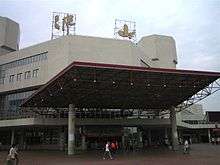
In 2013 to 2014, Foshan planned to improve public transportation by putting forward six measures:[15]
FMetro
The first line of FMetro opened in 2010, and another two lines are under construction and due to be completed in 2015 and 2020.
The existing line of FMetro network:
- Line 1 (Guangfo Line): From Xinchengdong Station to Yangang Station
Rail
Foshan is a main interchange for railway routes linking Guangzhou, Hong Kong and western Guangdong Province. It is connected with Hong Kong via the KCRC Guangdong Through Train service from Foshan railway station, an inter-city train service that was extended from Guangzhou to Foshan in the 1990s.
Aviation
There are coach bus services connecting Foshan with Hong Kong International Airport (HKIA).[16]
Education
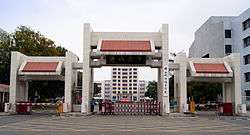
Like other government schools in Mainland China, Mandarin is the primary language of instruction in Foshan's government schools.
Elementary Schools:
- Guiyuan Elementary School
Middle Schools:
- Nanhai Experimental Middle School
High schools:
- Guicheng Senior High School
Universities:
- Foshan University
- South China Normal University (Foshan campus)
Sports
Foshan will be one of the host cities for the 2019 FIBA Basketball World Cup.[17]
The city hosted events during the 2010 Asian Games. Synchronized swimming at the Foshan Aquatics Center and boxing at the Foshan Gymnasium.[18]
In October 2014 the city hosted The Foshan Open golf event on the European Challenge Tour.[19]
Two professional football teams have played in Foshan. From 1989 to 1997 Foshan Fosti (now disbanded) played at the New Plaza Stadium in Chancheng (now demolished). Foshan Fosti mainly played in the second tier, but did play in the eight team top tier in 1993. In 2007, newly created Guangdong Sunray Cave played at Nanhai District Stadium (now demolished), before moving to the Century Lotus Stadium in 2008. Sunray Cave then moved to Guangzhou, although did play the final games of the 2013 China League One back at Century Lotus Stadium. They returned to Guangzhou in 2014 and then disbanded.[20]
Destinations
- Foshan Ancestral Temple (Zumiao)
- Nanfeng Kiln
- Liang's Garden
- Wong Fei-hung Memorial Hall
Sister cities


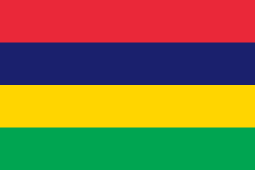

.svg.png)
.svg.png)


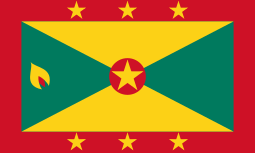

Notable people
- Wong Kei-ying (ca. 1815-1886), Hung Ga master, doctor, father of Wong Fei Hung and one of the members of the Ten Tigers of Canton.
- Leung Jan (1826-1901), Wing Chun master, doctor and instructor of Ip Man
- Wong Fei Hung (1847–1924), Hung Ga master and doctor, honored at a memorial hall in Chancheng.
- Ip Man (1893–1972), Wing Chun master and instructor of Bruce Lee.
- Wang Yue, (2009-2011), toddler killed in one of the most notorious examples of the bystander effect.
References
- "Archived copy". Archived from the original on 2014-12-28. Retrieved 2015-01-03.CS1 maint: archived copy as title (link)
- All GDP2017 data of the cities in Guangdong is based on Guangdong Statistical Yearbook ("Guangdong Statistical Yearbook 2018" (Press release). China Statistics Press. September 1, 2018. Retrieved May 6, 2019.)
- Encyclopædia Britannica, 11th ed. (1911), Vol. XV, "Kwang-tung".
- Encyclopædia Britannica, 9th ed. (1878), Vol. V, "China".
- McDermott, Joseph P., State and Court Ritual in China, p. 281.
- Vogel, Ezra F., One Step Ahead in China: Guangdong under Reform, p. 182, archived from the original on 2016-10-30, retrieved 2016-10-30.
- Farrell, Samuel. "Foshan". Bing Maps. Archived from the original on May 27, 2016. Retrieved May 28, 2016.
- "佛山 (广东省地级市)". BAIDU.com.
- "Foshan: From Buddhist Hill to World Manufacturing Centre", MacauHub, 11 September 2015, archived from the original on 5 April 2017, retrieved 30 October 2016.
- "RightSite.asia | Foshan Hi-Tech Development Zone". Archived from the original on 2012-04-26. Retrieved 2012-04-25.
- 中华人民共和国县以上行政区划代码 (in Chinese). Ministry of Civil Affairs. Archived from the original on 2015-04-02.
- Guangzhou Bureau of Statistics (广州市统计局) (August 2013). 《广州统计年鉴2013》 (in Chinese). China Statistics Print. ISBN 978-7-5037-6651-0.
- Census Office of the State Council of the People's Republic of China; Population and Employment Statistics Division of the National Bureau of Statistics of the People's Republic of China (2012). 中国2010人口普查分乡、镇、街道资料 (1 ed.). Beijing: China Statistics Print. ISBN 978-7-5037-6660-2.
- Ministry of Civil Affairs (August 2014). 《中国民政统计年鉴2014》 (in Chinese). China Statistics Print. ISBN 978-7-5037-7130-9.
- Foshan City Transportation Bureau home page Archived 2015-01-08 at the Wayback Machine Foshan City Transportation Bureau. Retrieved February 1, 2014
- "Mainland Coaches Archived 2018-05-08 at the Wayback Machine." Hong Kong International Airport. Retrieved on May 8, 2018.
- "FIBA Basketball World Cup 2019 high-ranking LOC officials confirmed, FIBA to open three offices in China". FIBA. 14 June 2016. Archived from the original on 17 September 2016. Retrieved 7 September 2016.
- "Guangzhou Asian Games Venues and Transportation". Archived from the original on 2019-04-19. Retrieved 2019-04-19.
- "The Foshan Tour". European Challenge Tour. PGA European Tour. Archived from the original on 18 March 2015. Retrieved 20 November 2014.
- "Football in Foshan and why it matters - Wild East Football". wildeastfootball.geezerbuild.com. Archived from the original on 2018-07-08. Retrieved 2018-07-08.
- "Ville de la Possession - Jumelages". Archived from the original on 2012-05-17. Retrieved 2012-05-17.
- "Archived copy". Archived from the original on 2017-08-22. Retrieved 2019-12-08.CS1 maint: archived copy as title (link)
- "Archived copy". Archived from the original on 2017-09-21. Retrieved 2014-08-03.CS1 maint: archived copy as title (link)
External links
| Wikimedia Commons has media related to Foshan. |

- Map of Foshan (in Chinese)
